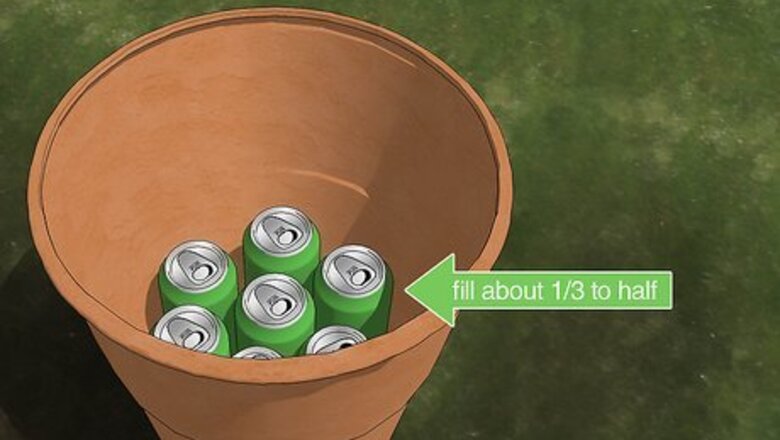
views
Choosing a Filler Material

Use collected soda bottles or cans for a low-cost, long-lasting option. If you drink lots of soda or bottled water, this option may be perfect for you. Collect the bottles or cans until you have enough to fill about 1/3 to half of your tall planter. Leave the caps on the plastic bottles, and avoid crushing the aluminum cans too much if you’re using those. If you use this option, you’ll also want to have a layer of newspaper, landscaping fabric, or cheesecloth available to lay down on top of your bottles or cans before adding your soil.
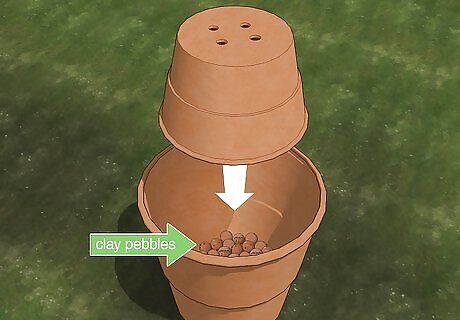
Try a smaller inverted pot if you have an extra one. Choose a pot that fits easily into the center of your tall planter. Be sure that this pot has its own drainage holes, or add some to it by drilling them in. If your large planter has drainage holes along the bottom edges, avoid blocking them with the top edges of your smaller pot. You’ll need to be sure that water can still drain through the bottom of your planter. If your smaller pot is significantly smaller than your larger planter, you’ll want to hold it in place with another material like clay pebbles or wood chips. This will also help to lessen the amount of soil you’ll need when filling your planter.

Stand a tall, rectangular wood beam into your planter for a simple choice. Scrap 4x4 or 6x6 pieces of wood also work well for filling the bottom of your tall planter. Choose a piece that easily stands up in the center of the bottom of your planter. Using a saw, cut the wood so that it’s about half the height of your planter. Avoid this option if the drainage holes of your tall planter are in the middle of your planter’s bottom. The wood will cover the holes and not allow your soil to drain properly. You can use wood chips, clay pebbles, or soil to hold the wood beam in place in the center of your planter.
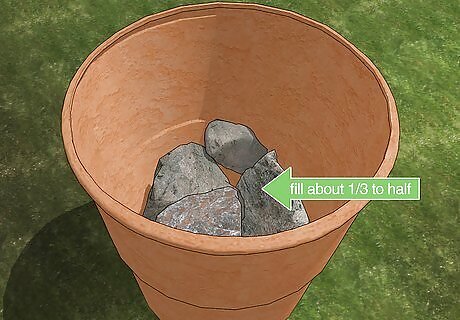
Use rocks or broken crockery for a sturdy option. This option is a bit heavier, but still works well to defray costs when buying your topsoil. Collect enough rocks or broken pots to fill about 1/3 to half of your tall planter. This option works well if your tall planter becomes narrower at the bottom and you’re concerned about it tipping over from the weight of your soil and plant at the top. Be sure that your rocks are not covering any drainage holes in the bottom of your planter.
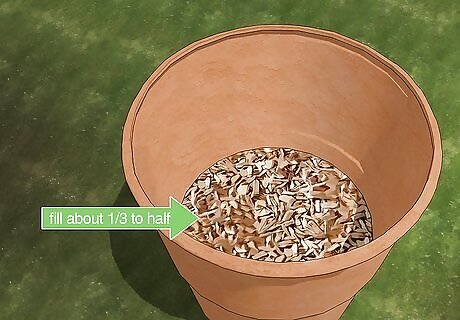
Choose wood chip mulch or pinecones as a lightweight choice. Collect enough pinecones to fill 1/3 to half of your tall planter, or purchase wood chip mulch at your local hardware store. If you use this option, you’ll want to be sure to check the filler each year when you change soil to make sure the wood hasn’t started rotting.
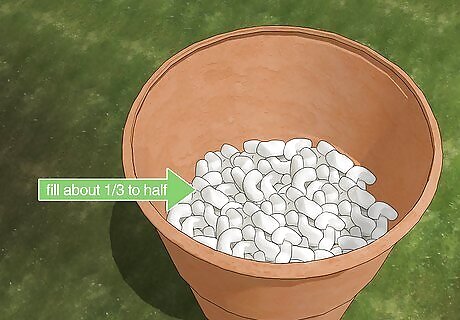
Use Styrofoam packing peanuts if you have them. If you have some packaging peanuts lying around, test them out to make sure they don’t dissolve in water. Place some in a bowl of water and check to see if they shrink or dissolve. If they don’t, you can use these to fill 1/3 to half of your tall planter for a planter that’s nice and light. Use mesh onion bags to hold the packing peanuts in place and avoid making a mess when you replace your plant’s topsoil each year. You can also try cutting up larger pieces of Styrofoam packaging and filling your planter with these pieces.
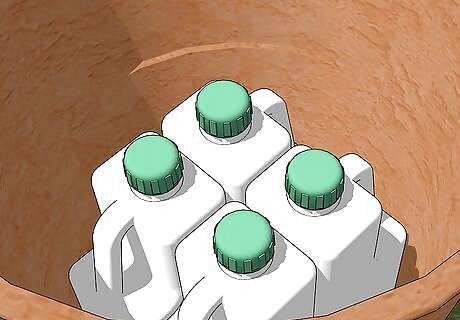
Try plastic Easter eggs, milk jugs, or containers as a long-lasting choice. Plastic is light and lasts a long time, so any plastic items that fit into the bottom of your planter are a nice choice. Use intact Easter eggs, keep lids on milk jugs, and keep the lids on containers if you’re using those. This will keep most of the bottom of your planter filled with air, and allow for good drainage from the soil above. If you’re using jugs or containers, be sure not to block any of the drainage holes in the bottom of your planter. Space the jugs or containers out so they’re not blocking the holes.
Adding Your Filler to the Planter
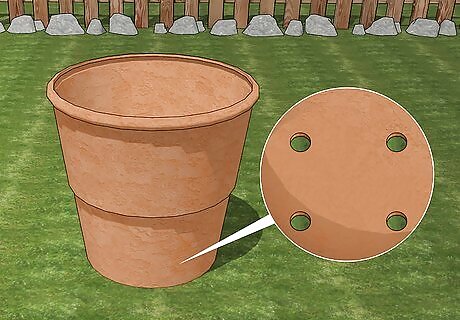
Drill drainage holes if the planter doesn’t already have some. Your planter should come with drainage holes at the bottom, but if it doesn’t, be sure to create some using a drill. Turn the planter over so the bottom is facing up, and use a power drill to make holes along the outside edges of the bottom of the pot. 6-8 holes should be enough for most tall planters, but you can make more if your planter is wide or it seems like it could use more. Always use eye protection and gloves when using power tools.
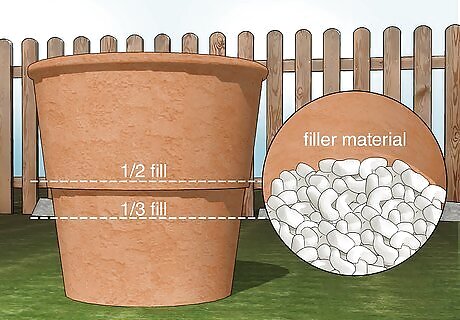
Fill your planter 1/3 to half full with your filler material. Use whatever filler material you’ve chosen to fill your planter 1/3 to half full. Some people choose to measure the depth of their plants instead, and subtract that number from the height of the planter to determine how much filler they need. This is fine too, especially if you’re using the planter for a plant that requires very little soil. For example, if your planter is 21 inches (53 cm) tall, and the soil of your plant is about 7 inches (18 cm) deep, you can either fill the bottom remaining 14 inches (36 cm) with filler, or fill the bottom 10.5 inches (27 cm), which is half the planter, depending on your preference.
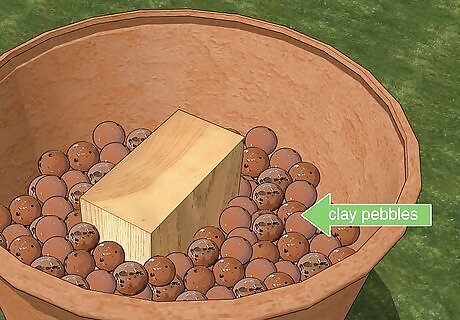
Surround the filler material with clay pebbles if needed. Certain fillers, like inverted pots or standing wood beams, may need extra support to hold them in place. Clay pebbles for plants are a good option for this, since they provide good drainage and are a bit lighter than wet soil. You can find clay pebbles at most hardware or home improvement stores in the garden/patio section. You also have the option of using wood chips instead of clay pebbles. These will need to be replaced each year because water can cause them to rot.
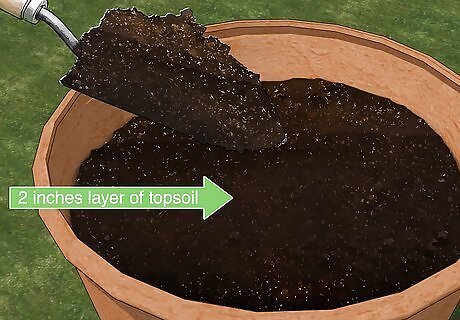
Add a layer of topsoil to your planter. Once you have your filler in place, put a 2 inches (5.1 cm) layer down on top of it, or more if your plant is somewhat shallow. If you used cans, bottles, or other plastic items as your filler, you should add a layer of newspaper, landscaping fabric, or cheesecloth between the filler and soil to prevent too much soil from falling down into the bottom of your planter.
Planting Your Flowers or Plants
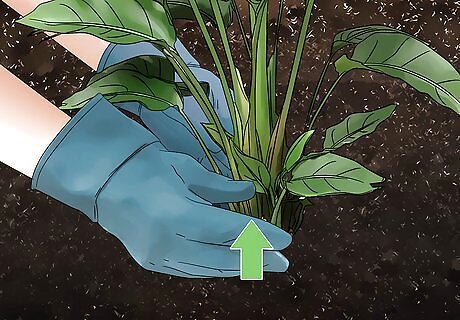
Remove your plant or flower from its original pot. Carefully tip the pot of the plant you’re using in the planter to loosen the soil from the inside of its original pot. Doing this when your plant’s soil is wet works best because the soil will stay together better. Remove the entire plant with its roots and soil all together.
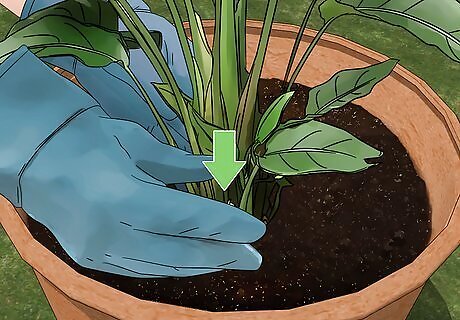
Set the whole plant with its original soil into the center of your planter. You want to try to keep the roots of your plant the way they are as much as possible to avoid damaging them. Once they’re settled into your planter, they will start to take up more space, but for now, don’t spread them out. Simply set the whole plant with roots and soil into your new planter. On the other hand, if the plant appears to be root-bound in its current container, loosen the roots gently outwards with your fingers. A root-bound plant will have visible roots that coil around the inside of the pot.
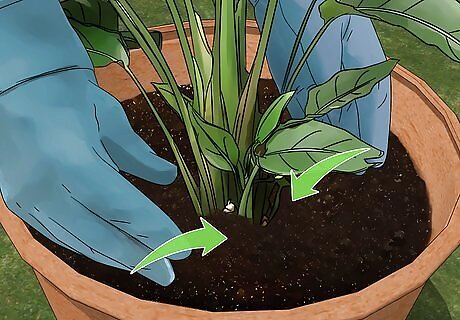
Fill the surrounding space with topsoil. Unless your plant with its original soil is wide enough to fill your tall planter to its edges, you’ll need to fill in the remaining space with topsoil. Make a nice smooth top layer of soil at the base of the plant, and give your plant some extra soil around its base if it lost any in the transplant.
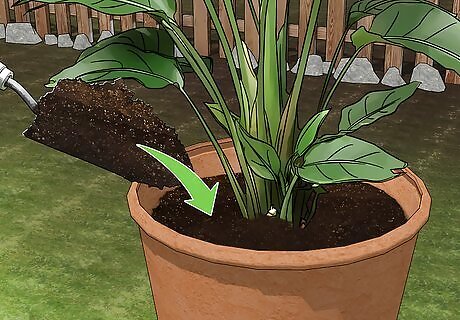
Change the topsoil and check on your filler each year. Many potted plants do well when their soil is changed each year, so they get new nutrients. You can discard the old soil from your planter into other parts of your garden, and use a new bag of topsoil to replace it. When you’re replacing the soil, peek down into your bottom filler to see if it needs to be replaced. Change your bottom filler if you used wood and it’s starting to rot, or become squishy and smelly; and change out aluminum cans if they are starting to rust. Plastic items and Styrofoam generally last a long time, but it doesn’t hurt to check on them and see if they are breaking down and could be replaced. Rocks, broken pottery, and clay pebbles will be the materials that last the longest out of your bottom fillers.
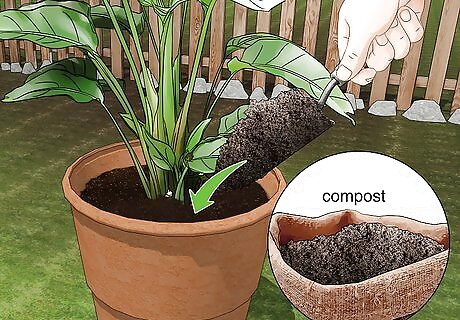
Mix in compost or soil amendments instead of replacing your topsoil. As an alternative to replacing the top soil completely, you can also just mix compost, leaf mold, manure, peat moss, gypsum, or other soil amendments into the soil. This works best if you originally started with healthy or living soil instead of premixed potting soil. If you used a mix like Miracle-Gro, it is likelier that you will need to replace the soil every year. Consider replacing it with living or organic soil.
















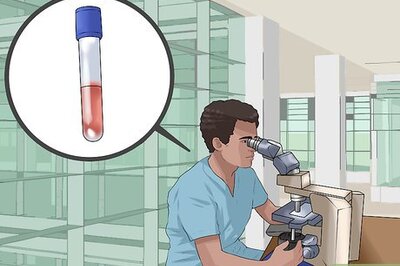

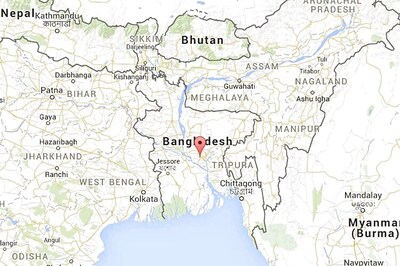

Comments
0 comment